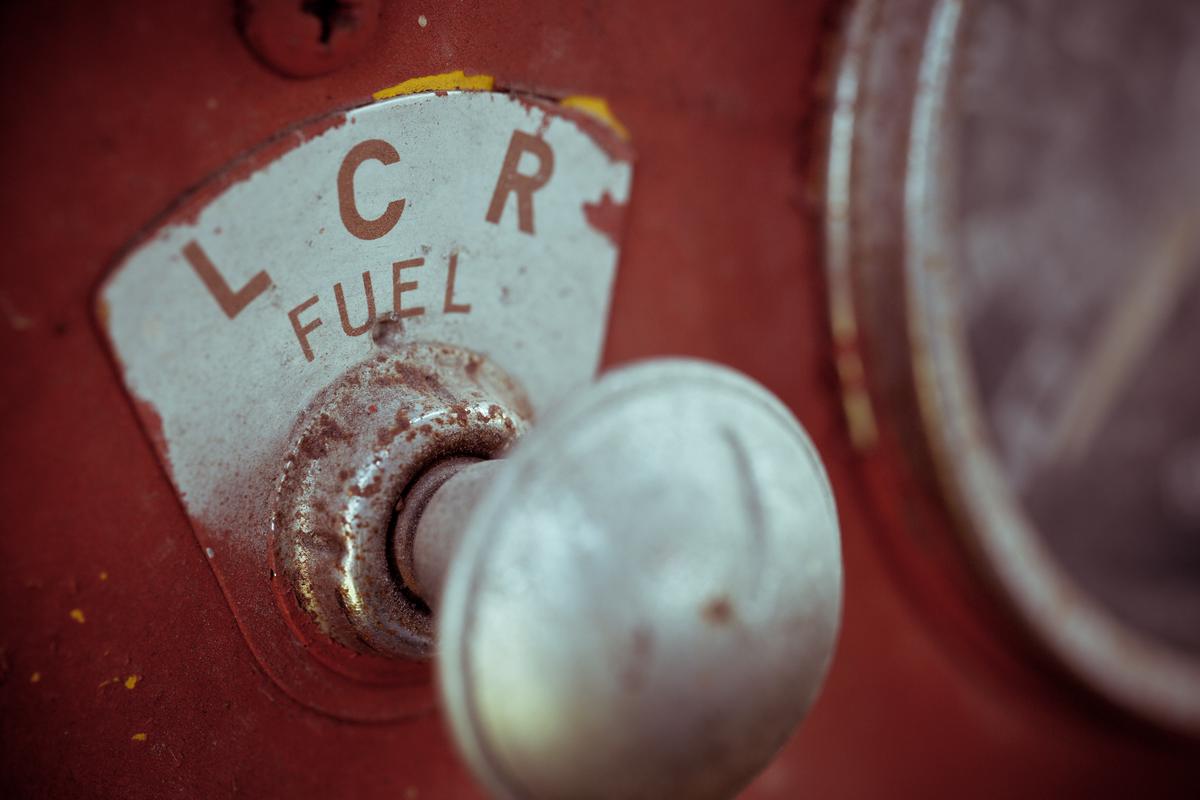10 Cars with the Worst Fuel Economy

Last Updated on October 17, 2023 by Christ
In an age where fuel efficiency is gaining increasing importance, a closer look at vehicles notorious for their excessive fuel consumption makes for an interesting study. When considering car models known for their poor gas mileage, many enthusiasts might be drawn to the throaty roar of a classic muscle car from the 70s, or the breathtaking speed of a modern-day luxury sports vehicle. Others might have in mind the imposing stature of a full-sized SUV. In each case, fuel efficiency is often sacrificed on the altar of speed, power, or size. This overview seeks to shed some light on a range of vehicles, from vintage speed machines to large contemporary road behemoths, with some of the worst fuel economies.
Contents
1970s Classic Muscle Cars
Fuel consumption in classic muscle cars never fails to generate buzz in the automotive circles. Enthusiasts, collectors, and amateurs alike indulge in pleasant chats, heated debates, and in-depth discussions about this intriguing issue. So, have you ever stopped and pondered just how much gas those unbeatable, old-school muscle cars consume?
Let’s dive into the world of these adored, impressive beasts that were among the most loved creations of the 60s and 70s. From the Ford Mustang to the Chevy Camaro and everything in between, these icons of American history sit proudly in the hearts and garages of their fans.
Displacement is a key factor in their gas guzzling reputation. Often outfitted with large-displacement V8 engines, these muscle cars have a huge appetite for fuel. For instance, a 1969 Chevy Camaro Z28, equipped with a 5.7L V8, could consume fuel at a rate of 13 miles per gallon in the city and up to 15 miles per gallon on the highway.
Raw muscle equates to less concern about fuel efficiency. Back in their glory days, muscle cars were all about outperforming their peers in terms of power and speed. Their heavy-duty nature and an unwavering focus on performance necessarily resulted in lower fuel efficiency.
High compression engines in these cars attributed significantly to their bold gas consumption. Usually running at a 10:1 ratio or higher, these engines gulped down more gas without providing an equivalent increase in engine power. Although technical evolutions have enabled modern muscle cars to balance performance and fuel economy, their ancestors weren’t so fortunate.
Not all muscle cars consumed gas uniformly. Factors such as the weight of the car, driving habits, condition of the engine, and tire pressure also influenced how much gas these vehicles used. Hence, a muscle car in perfect condition, driven gently, could attain better fuel consumption.
In summary, if preserving fossil fuels is your thing, you might want to think twice about indulging in this old-school automotive hobby. However, if the rumble of a V8 and the thrill of sheer horsepower excite you, then these magnificent machines might just be worth every drop of gas they consume. The charm and power of classic muscle cars certainly have a class of their own that simply can’t be overlooked!
But remember, while they certainly weren’t designed with fuel efficiency in mind, these cars are a reflection of an era when automotive engineering was more about power, performance, and pushing the boundaries. For the true enthusiasts, the high fuel consumption is just a trivial side-effect, an acceptable compromise, for the sheer joy and satisfaction of owning and operating these beautiful beasts.

Modern Luxury Sedans
Fuel Economy vs. Modern Luxury: An Investigation
A close look at the fuel economics of today’s large luxury sedans may cause one to stop short and marvel at the way they guzzle up gas at an astonishing rate. Sure, the smooth ride, plush interior, and advanced technological features all make for an ultra-comfortable ride but is this luxury truly worth the extra trip to the gas station?
Take comfort features like heated seats, for instance. Heating elements installed to warm the seats consume significant power, greatly reducing fuel economy. What begins as a luxury amenity can quickly become a gas-guzzling trap.
Let’s not forget the extra weight that these luxury elements add to your vehicle. It’s a simple rule of thumb – the heavier your car, the more fuel it uses. Oversized alloy wheels, panoramic sunroofs, high-end sound systems and multiple electric motors for things like power seats, all add considerable weight to your vehicle and start chipping away at your miles per gallon.
Even modern luxury sedans’ advanced powertrains can potentially consume more fuel. Many luxury car brands pride themselves on the power and performance of their engines which often means sacrificing fuel efficiency. It’s important to understand, however, that the torque and top speed a sedan can reach comes second to mileage for most everyday drivers.
Then, there’s the air conditioning system. Everybody loves a click of the button that cools down your luxury sedan on a hot summer day, right? But that pivotal moment of comfort oftentimes comes at a substantial cost in terms of fuel economy. An A/C system can consume an additional half-mile to a mile per gallon.
Furthermore, onboard computers and sophisticated infotainment systems use up extra power, too. The vehicle’s main battery and alternator take on the burden of powering up these interactive dashboards, decreasing the overall fuel efficiency.
Lastly, features like all-wheel-drive systems also add to the fuel consumption of your luxury sedan. While they certainly enhance the performance and safety of the vehicle, these systems tend to consume more gas due to the extra energy required to power all four wheels.
In conclusion, a rich tapestry of seemingly insignificant features and systems can reduce your precious fuel economy, whilst hidden beneath the cloak of modern, luxury sedans. So next time you’re swooning over the latest plush ride, it might be worth considering the hidden costs that come with the comfort and convenience of such vehicles. Will you let the allure of luxury sedans shake your commitment to fuel efficiency and greater savings, or will you reconsider the balance and search for a happy medium in your auto choices?

High Performance Sports Cars
An Factor that can be overlooked in considering fuel economy is the time spent on roundabouts. It has been a common notion that a vehicle circling around a roundabout consumes less fuel compared to stopping and starting at a traffic light. However, the reality is that your muscle car or luxury sedan can burn higher fuel when continuously circling roundabouts, especially when not taken into account wisely.
A surprising point to note is that an engine’s idling, a frequent occurrence when on roundabouts, is a significant facet of fuel consumption. While it might seem like your vehicle at idle isn’t doing much, it’s actually utilizing fuel to keep all its systems active. In modern muscle cars, an extra couple of minutes of idling time on the roundabout can use the same amount of fuel as driving for a mile.
The same goes for luxury sedans. As these cars are packed with features like seat heating, premium sound, and climate control, the usage of these features while idling can increase fuel consumption even more. The demand these systems draw from the car’s alternator can add up, especially while navigating a series of roundabouts.
Furthermore, automatic transmissions, ubiquitous in both muscle cars and luxury sedans, can consume additional fuel while going around roundabouts. Due to the nature of a roundabout, the car is less likely to reach a steady cruising speed and is often unable to utilize the overdrive gear that optimizes for fuel economy at higher speeds.
Finally, let’s not forget the potential wear and tear on your vehicle from excessive use of roundabouts. Repeatedly circling around roundabouts requires constant turning, which can result in faster wear of your vehicle’s components like tires and steering mechanisms. This, in turn, can lead to an increased need for maintenance and parts replacement, adding additional cost, and indirectly leading to a further dent in your fuel economy.
In sum, while roundabouts may have built a reputation for being the fuel-friendly option due to less stop-and-go traffic, a few extra seconds can actually escalate your costs. So while you may be enthralled by your car’s beautiful engineering, whether it be a roaring muscle car or a smooth-riding luxury sedan, remain cognizant of fuel-conscious driving habits. Every second counts–especially on the roundabout.

Large, Full-Size SUVs
Now, let’s hop onto the topic of SUVs loaded to the hilt with that extra row of seating. You’re cramming in more people, more luggage, and essentially more weight. It’s no surprise that the additional load will impact fuel consumption.
To be precise, every extra 100 pounds can decrease a vehicle’s fuel economy by about 1%. A seven-seater SUV loaded to capacity can potentially have an additional 600-700 pounds, including the weight of the passengers and their baggage. That’s translating to an approximate 6-7% loss in fuel economy, which might not seem significant for a single trip, but over time those numbers add up.
Couple that with the fact that more passengers often means more usage of amenities like air conditioning, power windows, and entertainment systems – all these can add to the overall energy consumption of the vehicle. There’s even research pointing out that aggressively using air conditioning can reduce a vehicle’s fuel efficiency by as much as 25% at low speeds! The back seat fight for thermal comfort now has a new contender – the gas tank.
Then there’s the impact of drag. Shape and aerodynamics are key contributors to a vehicle’s fuel efficiency. Essentially, the bulkier the vehicle, the more air resistance it faces. Add an extra row of seats and your SUV’s fuel efficiency is heading south due to increased resistance.
One cannot ignore the performance requirement as well. More weight equals lower acceleration. In order to compensate, the engine will have to work harder, consuming more fuel in the process.
Even tasks as simple as parking could mean more time spent idling or maneuvering, leading to inflated fuel consumption figures. Picture this – you’re circling around in a packed parking lot, the extra passengers are adding to the vehicle’s weight, and the AC is running full blast to keep everyone comfortable. It’s a perfect storm for chugging fuel.
In essence, the love for those extra seats and the allure of bringing the whole squad onto a road trip in the same vehicle can cost a significant toll on the fuel economy. It’s something every SUV owner should consider – whether the benefits outweigh the costs, and if they’re really getting the most out of that extra row of seats without draining the gas tank. That’s food for thought till the next fill-up!

Over the years, cars have come in all shapes and sizes, each designed with a specific purpose or demographic in mind. Whether it’s the retro charm of classic muscle cars, the unapologetic opulence of modern luxury sedans, the exhilarating speed of high-performance machines or the grandeur of full-sized SUVs, they all have one thing in common – an incredibly high fuel consumption. As we journey through the evolution of the automobile, it becomes clear that despite advancements in technology and growing environmental consciousness, there are still designs where fuel efficiency plays second fiddle to performance, luxury, or sheer size. Yet, even while guzzling gas, these vehicles continue to capture the hearts of automotive enthusiasts all over the world.
Leave a Reply